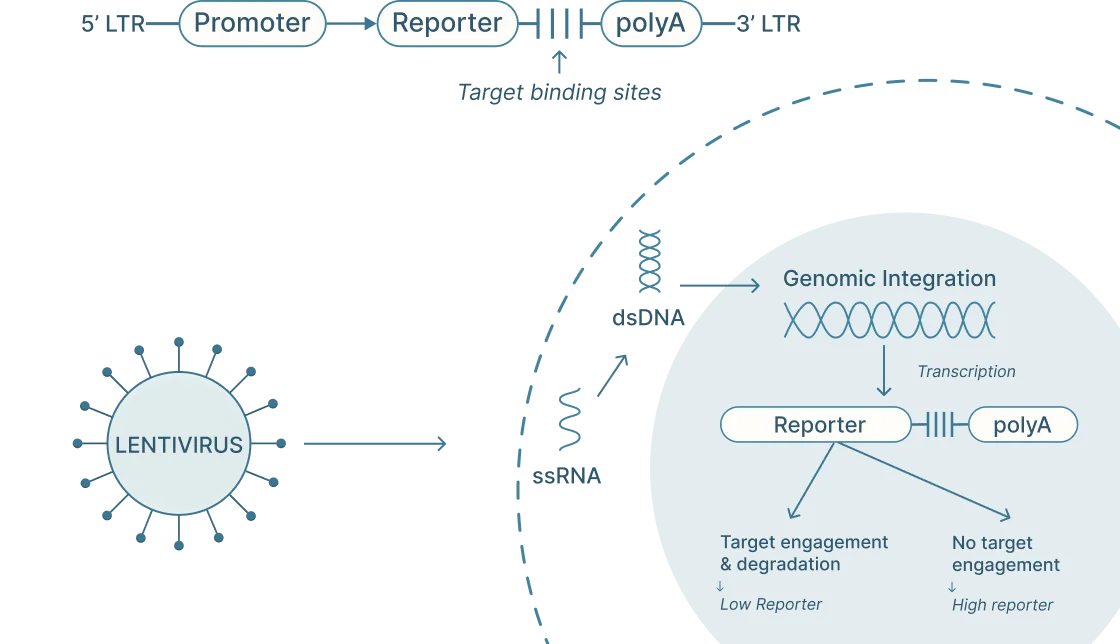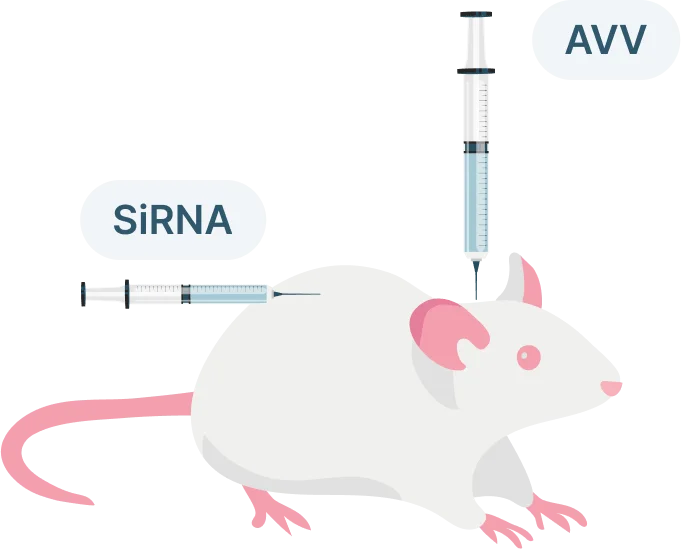Target Validation
Optimized viral vectors for accurate target validation in drug discovery and therapeutic development.
How Vectors Work
in Target Validation
Vectors are key in target validation, delivering genes to cells to study target effects. They enable gene overexpression or silencing (via RNAi or CRISPR) and use reporter systems to track target activity. Functional assays link gene modulation to observable changes, helping identify therapeutic targets for drug development.
Diagram for Target Validation

Key Applications
of Lentivirus in Target Validation

Gene Overexpression
Lentiviruses efficiently introduce target genes for assessing overexpression effects.

Gene Knockdown
Lentiviral vectors deliver RNAi or shRNA to silence target genes and study gene inhibition.
Stable Cell Line Creation
Lentiviruses integrate into the genome, enabling long-term stable cell lines for validation.
Functional Assays
Lentiviruses introduce reporter genes to measure the effects of target manipulation in live cells.
Why Use Vector Biolabs

Customizable Vectors
Offers tailored lentiviral and other viral vectors for precise gene overexpression, silencing, and editing in target validation.
High-Quality Vectors
Ensures reliability and reproducibility with rigorous quality control on all vector products.
Expertise and Support
Provides guidance and expertise to optimize experimental design and target validation processes.
Rapid Turnaround
Offer fast production and delivery times, allowing you to accelerate your clinical trial screening projects and reduce overall timelines.
Use Case
A pharmaceutical company wanted to develop siRNA therapy for targeting human genes. To understand the specificity and efficacy of the siRNA, the study used Vector Biolab's AAV to deliver the human transgene that was expressed in the in the 3’UTR so it would not express as a protein and cause disease or activate unwanted pathways. The specificity and efficacy of the siRNA was measured as a function of luciferase expression.
Vector Biolabs saved the research lab months of time and money in developing a humanized mouse model.
Vector Biolabs saved the research lab months of time and money in developing a humanized mouse model.






